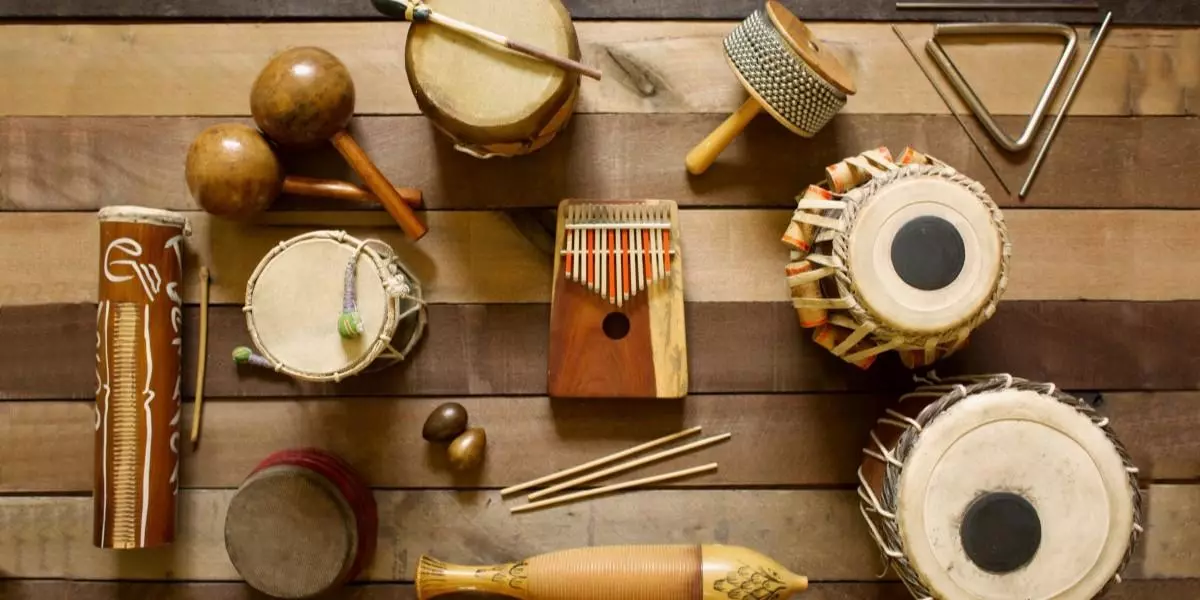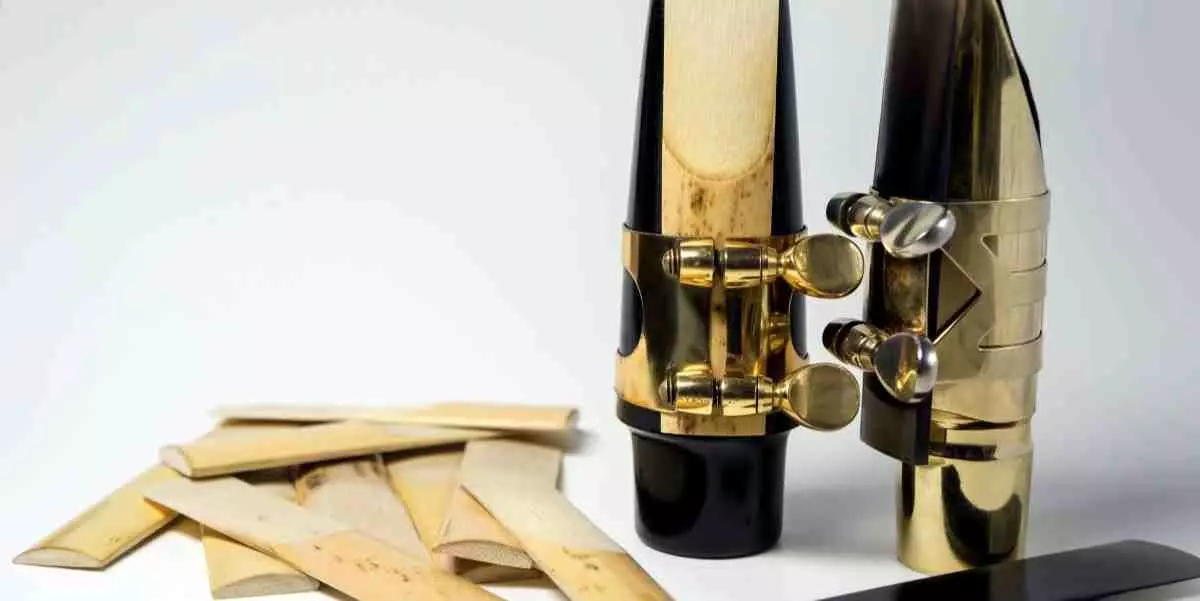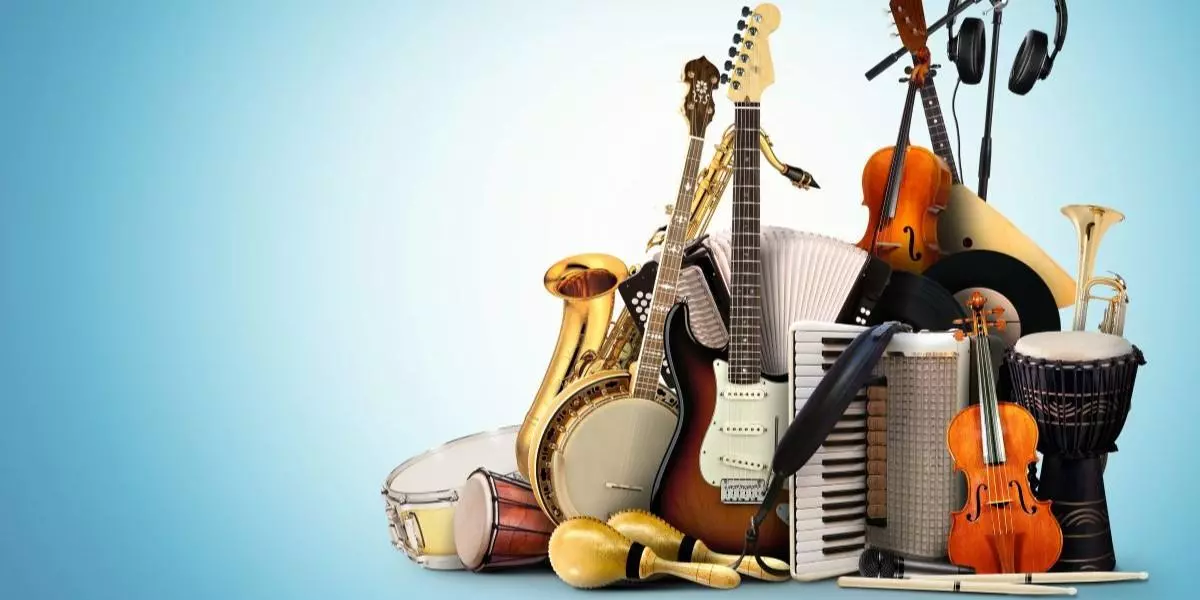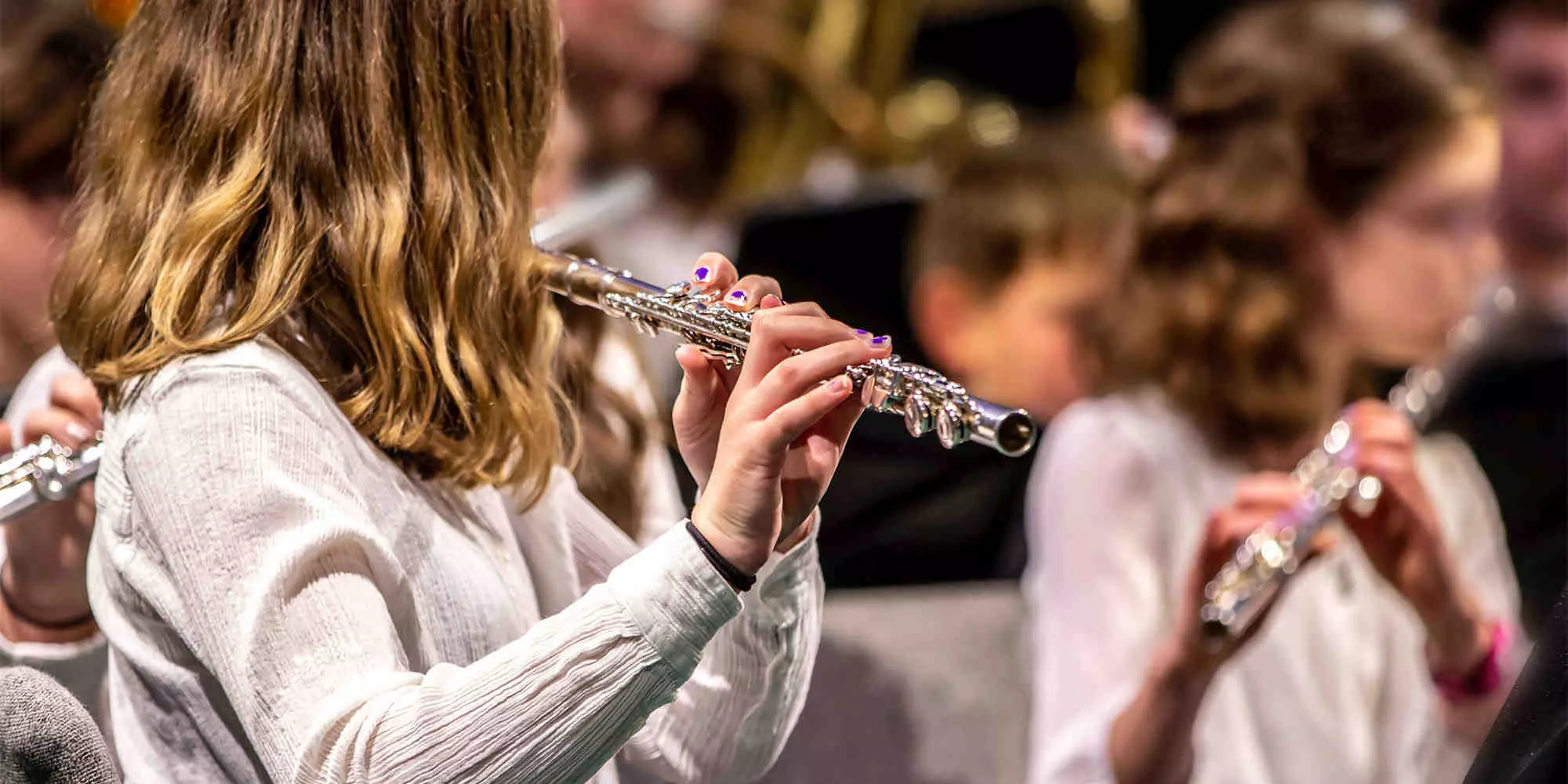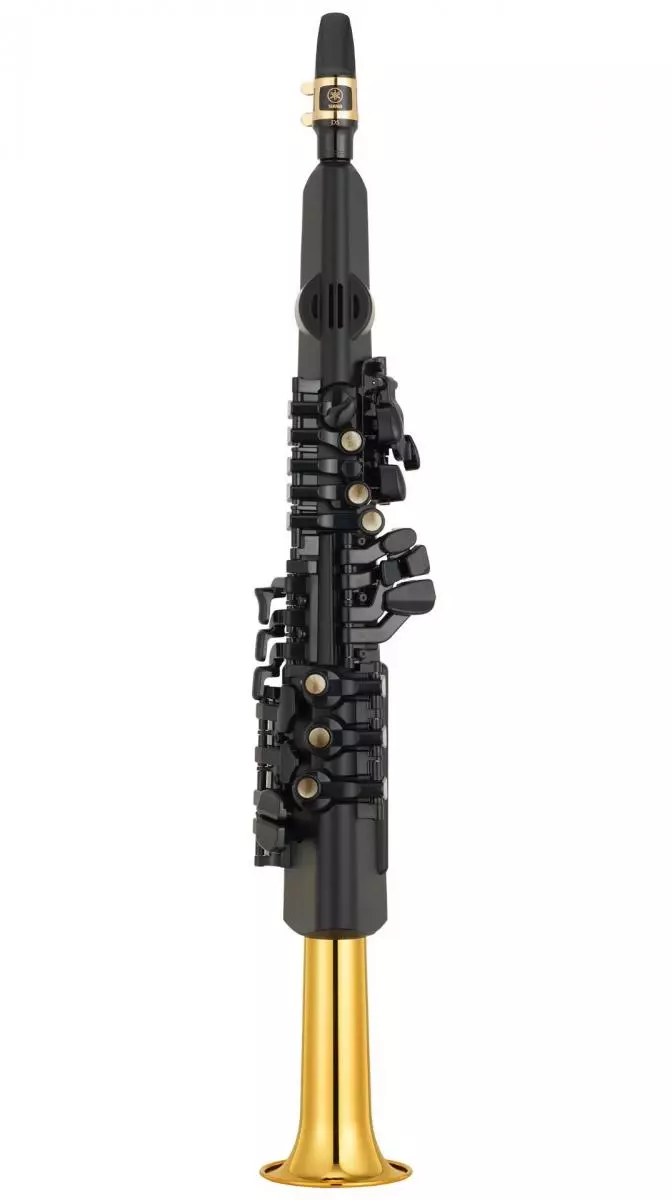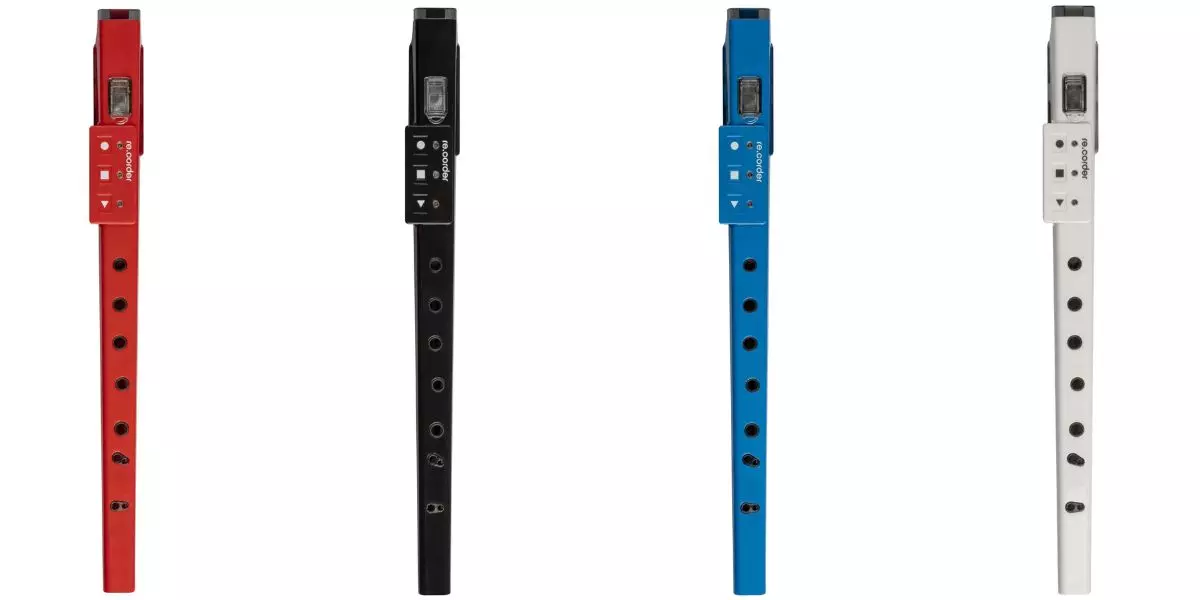MIDI Wind Controllers: More Than Just Keyboards

MIDI wind controllers are relatively new in the music world. As early as the 1930s, inventors were interested in making existing acoustic woodwind instruments into electroacoustic instruments. Benjamin F. Miessner filed a patent in 1938 for an electroacoustic clarinet. The patent featured a pickup to sense the reed vibration, and attachments to other electronic filters.
Fast forward to 1967, the Hohner Electra-Melodica becomes the first wind synth to be commercially produced. In the 1970s, the most widely played wind controller was Computone’s Lyricon.
The Lyricon is an analog electronic wind synthesizer. The Lyricon was based on saxophone fingerings and a mouthpiece and was used by recording artists such as Tom Scott and Roland Kirk. It featured a dedicated synth wired directly to it with no built-in sounds.
Lyricon players could use articulation, dynamics controlled by breath, pitch variation controlled by embouchure, and expand the range of a woodwind instrument octaves above the normal range. Many of these features are still used in the MIDI wind controllers on the market today.
EWI Digital Wind Instrument
My first introduction to MIDI wind controllers was in 2017 when I tried the AKAI EWI. As a flutist, dabbling as a clarinetist, the EWI was intriguing for a few reasons: the ability to practice quietly with the built-in sound module and a pair of standard headphones.
With non-movable keywork, there is no audible noise from keys physically moving. The EWI can be programmed for various woodwind instrument fingerings and I prefer the clarinet option. I was in my living room during the middle of the night playing excerpts from Dvorak’s Ninth Symphony, and no one knew.
While convenient for silent practice, some of the built-in sounds on the older EWI controllers are also the downside of the instrument. For example, the flute sounds unnatural; however, the oboe and English horn were close to the acoustic sound. EWI controllers are popular amongst pit musicians, and once connected to a DAW of your choice, this is where the EWI shines.
Akai EWI 5000 MIDI Wind Controller w/USB and Wireless Connectivity
EWI mouthpieces are also a key feature as to why this product is an excellent choice for wind players, as it’s intuitive and doesn’t require a lot of practice to start playing musically. The mouthpiece measures air pressure and has a bite sensor. Air pressure controls the dynamics of the notes while biting down on the mouthpiece allows for a vibrato-like effect.
Like the wind controllers of the past, the EWI can control the switch octaves while playing, just with the swipe up and down of your thumb. The current EWI wind controller is the EWI 5000, which offers USB and wireless connectivity and 3GB of built-in sound.
Yamaha YDS-150 Digital Saxophone
For the saxophonist looking for the most realistic MIDI wind controller, Yamaha’s YDS-150 Digital Saxophone is one of the best options. The controller features a soprano saxophone mouthpiece, synthetic reed, and ligature, and the keywork is modeled after Yamaha’s acoustic saxophones.
When I picked up the YDS-150, it felt substantial playing a realistic feeling controller with moveable keywork and full breath response that wind players are used to on our acoustic instruments. The built-in sounds are quite impressive with a total of 73 voices, 56 of which are saxophone.
Yamaha YDS-150 Digital Saxophone
I tested this controller using the integrated speaker and headphones and connected it via Bluetooth to a DAW on my iPad and computer. I had minor lagging via Bluetooth and my iPad; however, the connection to the DAW on my computer was seamless. Garageband on the iPad warns there can be a delay when using Bluetooth-connected instruments, so I don’t fault the controller for this issue.
Another feature is the YDS controller app. For a fully customized playing experience, the controller app can expand sounds via editing and adjust to individual keys. Professional and amateur saxophonists should try this controller out. If only for a great option for silent practice; however, recording directly into a DAW as a saxophonist with this controller would be equally as fantastic.
Re.Corder
Arguably the most accessible MIDI wind controller is the Re.Corder. The Re.Corder takes the size, shape, and fingering of a soprano recorder, and uses digital sensors to detect which holes are open or covered while you are playing.
Recorders have a long musical history across many countries and the Re.Corder makes the use of MIDI wind controllers accessible to a wider audience because of this. There is a dedicated app that you can download to learn how to use the Re.Corder and to teach yourself how to play. While thoroughly enjoyable, my interest was how the Re.Corder compared to the other MIDI wind instruments I’ve had the opportunity to sample.
This controller can be played acoustically by taking out the mute that sits above the control panel. That’s the only way to get sound from it without connecting to a separate device. It can be played acoustically without charging the instrument before use.
For a woodwind player looking at what’s possible with MIDI controllers, the Re.Corder is a great, budget-friendly option with a small learning curve compared to the other wind controllers on the market. Since most people already own a smartphone, the initial investment is small with the purchase of the Re.Corder and installing the app. Re.Corder is available in four colours.
MIDI Re.Corder - available in 4 colours
When connected via Bluetooth to an iPad and computer, it functioned exactly like the other wind controllers where your DAW contains the sounds for performance and recording. With no moving keys, and feeling comparable to a soprano recorder, I enjoyed playing it for an extended period, since my arms did not tire from the weight. At first, I had some issues with finger pressure and placement on the lowest two holes, but that went away with some practice.
Via the Re.Corder app, users can create custom fingerings in real time, and be played without blowing into the instrument, just like a keyboard. This makes the Re.Corder one of the most accessible instruments available, since it can be customized to the physical abilities of each player.
This is a fantastic and inclusive way of introducing music in a classroom where students can't physically hold an instrument. The teacher and student could program the Re.Corder using the app, in a way that works for the student, and then they can perform the music with the rest of the class.
For a woodwind player looking at what’s possible with MIDI controllers, the Re.Corder is a great, budget-friendly option with a small learning curve compared to the other wind controllers on the market. Since most people already own a smartphone, the initial investment is small with the purchase of the Re.Corder and installing the app. Re.Corder is available in four colours.

